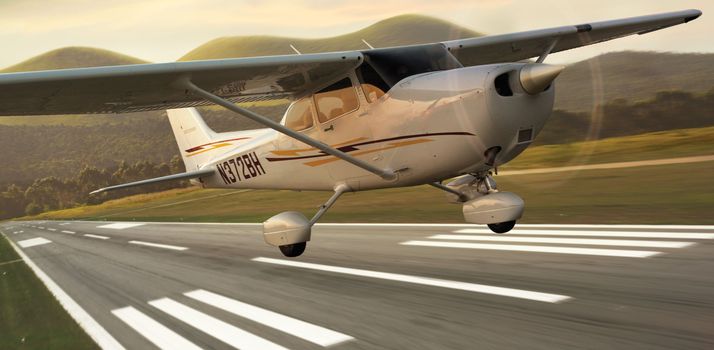Arkansas airports receive $42.5 million in FAA funding for projects
by October 2, 2019 3:56 pm 1,431 views

The U.S. Department of Transportation (DOT) has awarded more than $42.5 million to community and regional airports in Arkansas to fund upgrades to taxiways, terminals and other airfield infrastructure improvements across the state, many of which are already underway.
On Monday (Sept. 30), DOT Secretary Elaine Chao announced that the department’s Federal Aviation Administration (FAA) will award $986 million in airport infrastructure grants to 354 airports in 44 states and Puerto Rico and Micronesia.
This is the fifth and final allotment of the total $3.18 billion in the FAA’s Administration (FAA) Airport Improvement Program (AIP) funding for airports for fiscal year 2019, which ended on Sept. 30 for DOT and all federal government agencies.
“Infrastructure projects funded by these grants will advance safety, improve travel, generate jobs and provide other economic benefits for local communities,” Chao said of the federal program that is administered through the state Department of Aeronautics (ADA)’s Airport Aid program.
In Arkansas, 52 grants were awarded rural and community airports in every region of the state. The largest amount $6,854,319 was handed out to the Texarkana Regional Airport to construct a new taxiway. That regional airport, known locally as Webb Field, provides commercial jet service to and from the Dallas/Ft. Worth International airport through America Eagle commuter service.
In 2017, the FAA awarded the Miller County airport nearly $1 million to begin design work on the facility’s longest taxiway, which measures about 6,600 feet. Shannon Elliott, finance manager for the airport, said officials there are expected to hold a pre-engineering meeting concerning construction on the new taxiway next week.
“There will be a ground-breaking sometime after that meeting,” said Elliott, offering no further details.
According to local media reports, the Southwest Arkansas regional airport that provides commuter service to residents of Arkansas, Texas, Louisiana and Oklahoma is also planning construction of a new $10 million terminal that is expected to begin construction in 2021. Mark Mellinger, the airport’s regional director, was out of town and not available for comment.
Besides upgrades at the Texarkana airport, the Bill and Hillary Clinton Airport in Little Rock and City of Helena-West Helena receive the next largest FAA awards of $6,369,278 and $4,480,376, respectively.
The federal funds for the state’s largest airport in Little Rock will go toward upgrading the Adam Field’s runway and taxiway lighting. A year ago, Little Rock National Airport officials first announced a major $450 million capital improvement program over the next 20 years centered around a new state-of-the-art terminal complex.
The state’s second largest airport, Northwest Arkansas Regional Airport (XNA) in Highfill, also received $3,125,267 for terminal improvements and taxiway upgrades. XNA also was among a handful of Arkansas airports to receive the first allotment of FAA funds a year ago to repair that facility’s taxiway. The Fort Smith Regional Airport, the state’s third most active commercial airport, received $1.13 million for runway rehab and taxiway lighting improvements.
Arkadelphia’s Dexter Florence Memorial Field rounded out the top five in Arkansas with an FAA grant award of $2,242,254. A year ago, Arkadelphia’s city-owned airport also received the first allotment of federal funds to rehab its full-length taxiway and a 5,000-foot airstrip, known locally as Runway 4-22. The final allotment from the FAA will allow the community to complete that project.
According to the state Department of Aeronautics (ADA), which administers the state’s Airport Aid program, there are 92 publicly-owned and public-use airports eligible for local, state and federal funding on a reimbursable matching basis. Every state airport has at one time or another participated in the FAA’s federal grant program, officials said.
ADA Director Jerry Chism said the FAA funds are disbursed directly to the Arkansas community airports, based on grant applications that were submitted for local projects. “The FAA then considers those based on justification of need and they have to comply of course with all the (federal) guidelines and regulations,” said Chism, who was appointed to his post by Gov. Asa Hutchinson in 2015.
Selected projects in Arkansas and across the U.S. include runway reconstruction and rehabilitation, construction of firefighting facilities, noise mitigation, emissions reduction, and the maintenance of taxiways, aprons, and terminals. The construction and equipment supported by this funding will increase the airports’ safety, emergency response capabilities, and capacity, and could support further economic growth and development within each airport’s region, FAA officials said.
Arkansas airports can receive a certain amount of AIP entitlement funding each year based on activity levels and project needs, FAA officials said. If their capital project needs exceed their available entitlement funds, the FAA can supplement their entitlements with discretionary funding.
FAA officials said there are 3,332 airports and 5,000 paved runways that support economic competitiveness and improve quality of life in local communities across the U.S. According to the FAA’s most recent economic analysis, U.S. civil aviation accounts for $1.6 trillion in total economic activity and supports nearly 11 million jobs.
